These fluffy vegan potato rolls are perfect for breakfast or as a savory snack! Made with a spicy potato filling, you won't be able to stop after one. Known as Turkish poğaça, this traditional pastry is all vegan and can be made gluten-free!

Jump to:
🥖 What is poğaça?
Poğaça is a soft, savory bread roll from mainly Turkish and Balkan cuisines. It usually has fillings such as potato, feta cheese (with or without herbs like parsley), and olive paste. Pronounced "poe-ah-CHA", the popular breakfast pastry can be found at virtually every bakery in Turkey.
Some sources allege that the word pogacha came from panis focacius in Latin... which sounds very similar to the classic Italian bread focaccia that tastes just like Turkish pogaca.
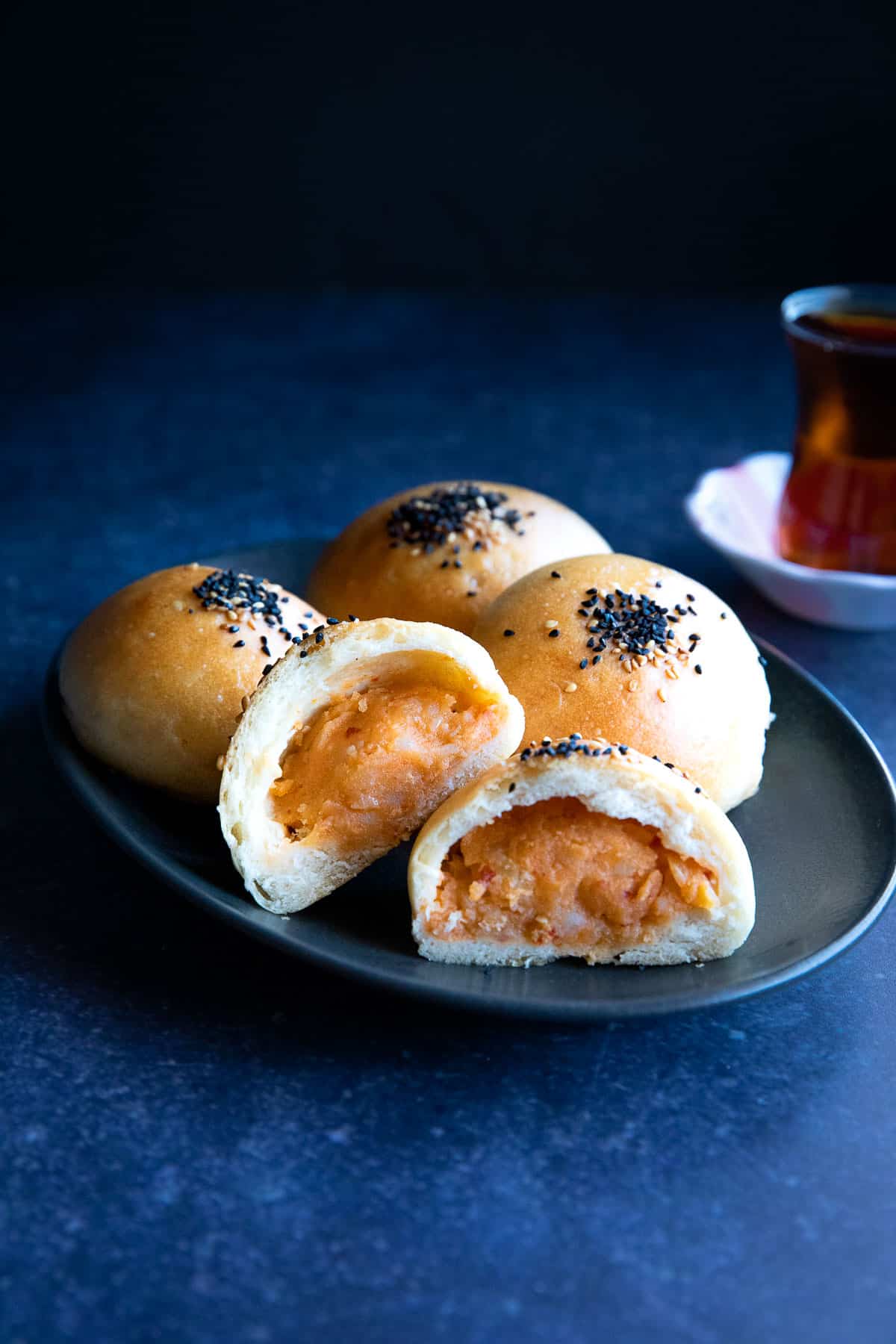
It is also known as "pogača" in Bosnia and Croatia, "πογάτσα / pogátsa" in Greece, "pogácsa" in Hungary, "pogatschen" in Austria, and "pogace" in Romania.
⭐️ Why this recipe works!
Do you like soft bread in general? How about dinner rolls? Pogaca is a soft pastry made irresistible with a spicy potato filling! It is delicious, fluffy, flavorful, fun to make, and easy to carry for work days or road trips 🙂
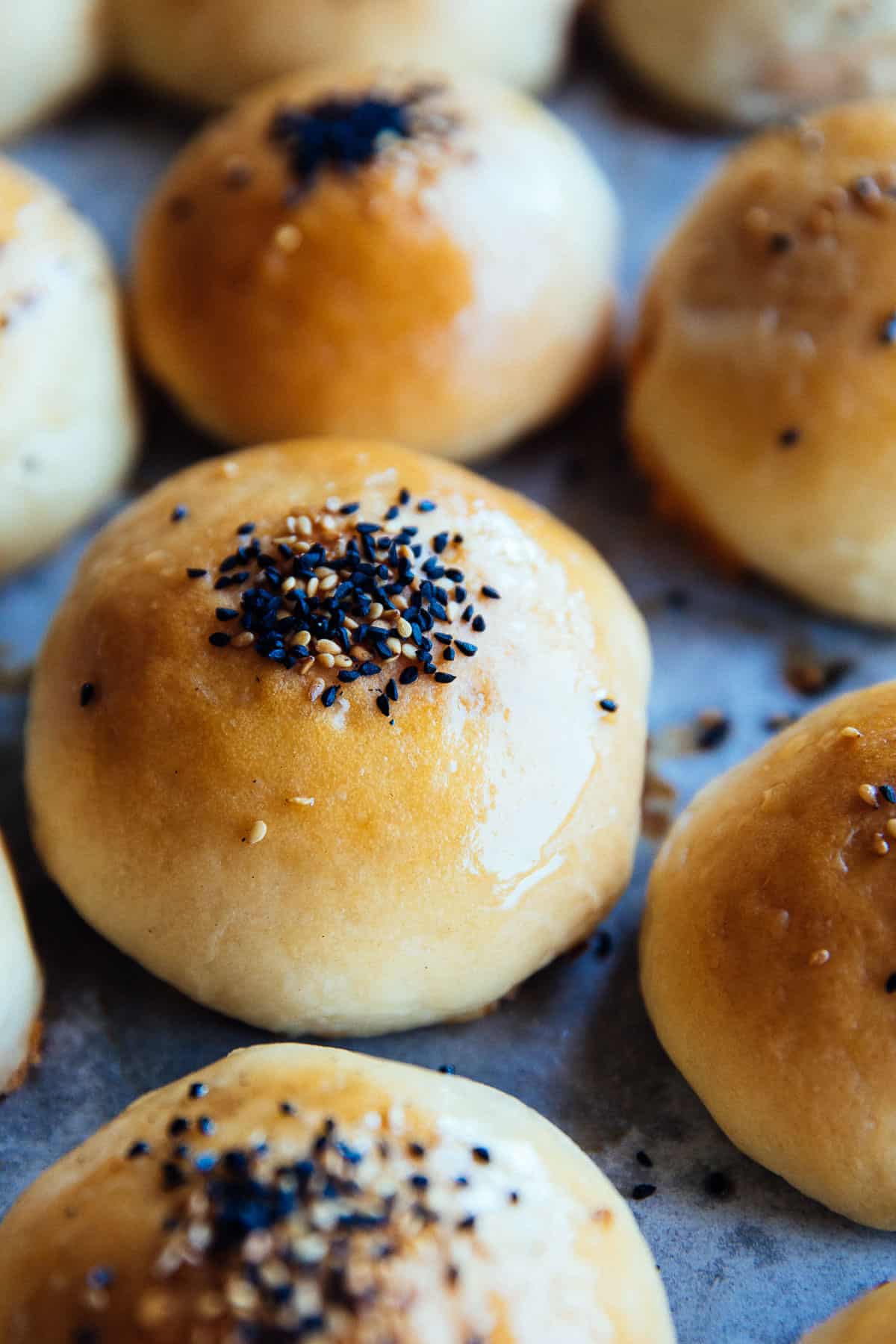
The traditional recipe uses eggs, but it was super easy to veganize it by substituting them with aquafaba (what can't chickpea juice do!) and using plant milk. Recently a friend who's never had them before dubbed pogaca "one of the best things she's ever eaten"... I believed her because she ate so many after only wanting to have one small bite!
🥔 Ingredient rundown
The Dough
Pogaca dough is often leavened and in my opinion much tastier that way. It is traditionally made with cow's milk, a neutral oil, and eggs. Depending on the type and locality of pogaca, butter or margarine may also be used for a more "biscuity" pastry.
Make sure to use unsweetened and unflavored plant milks for the recipe. I love soy, especially the Westsoy or Trader Joe’s brands made using only soybeans and water.
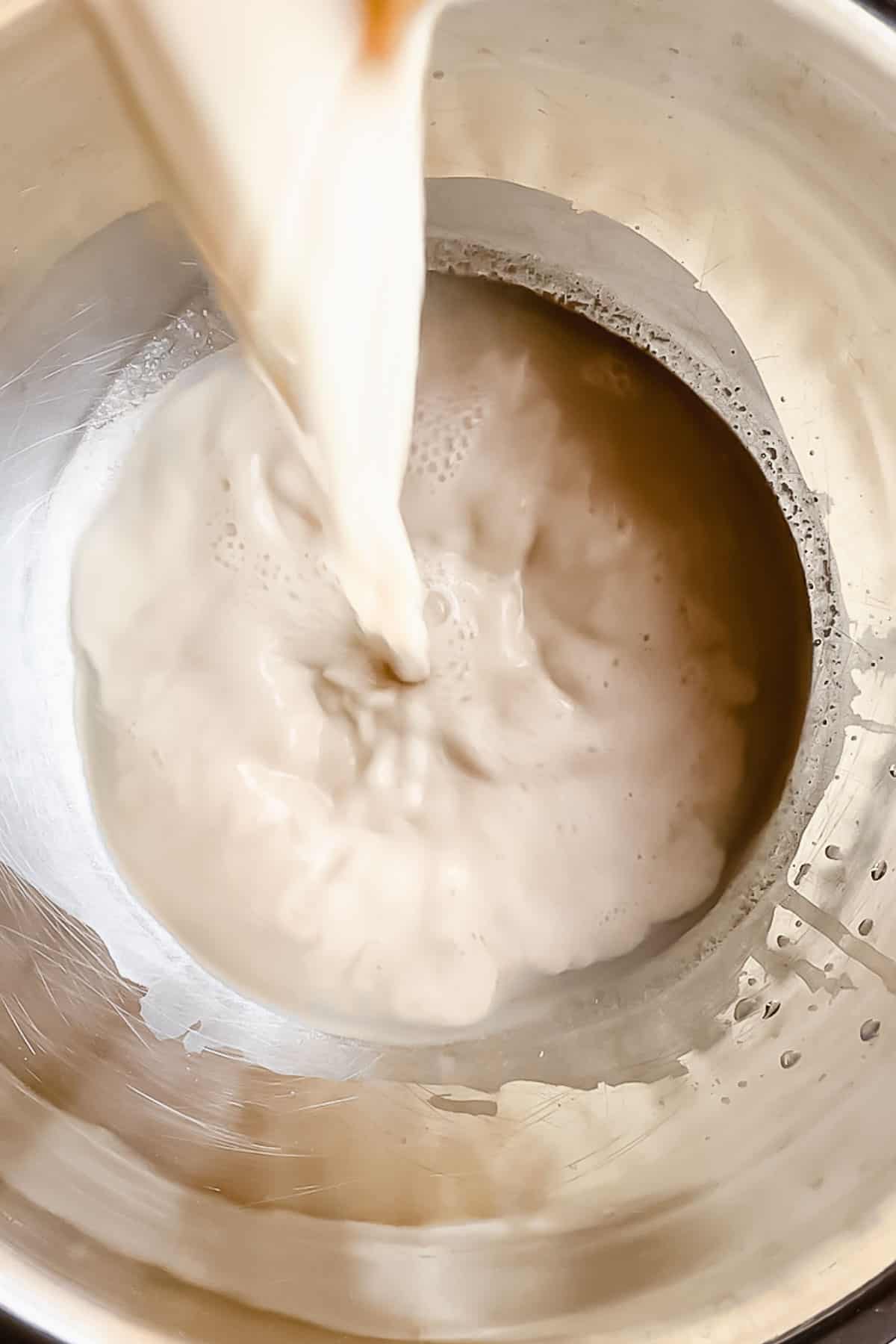
Pogaca can also be gluten-free! If necessary, I highly recommend using King Arthur or Bob’s Red Mill measure-for-measure GF flours. The small-sized pogacas are perfect if you make them GF as the dough will be more prone to tears while kneading due to a lack of robust structure traditionally provided by gluten.
The Filling
My filling of choice for pogaca is this spicy potato-onion. Honestly, this filling is even perfect on its own! So I'd suggest making extra to enjoy as an appetizer later.

You could also use any other filling you'd like: vegan feta or ricotta, olive paste, vegan ground beef, spinach, or eggplant will all make amazing pastries! For some more inspiration, take a look at the filling options for this gozleme recipe or the beloved pide toppings.
Toppings
A beautiful golden-brown glaze on a pogaca is absolutely key! Traditionally, pogaca has an egg wash. I tried a few different vegan glaze options and decided that a mixture of olive oil and aquafaba in equal parts worked best!
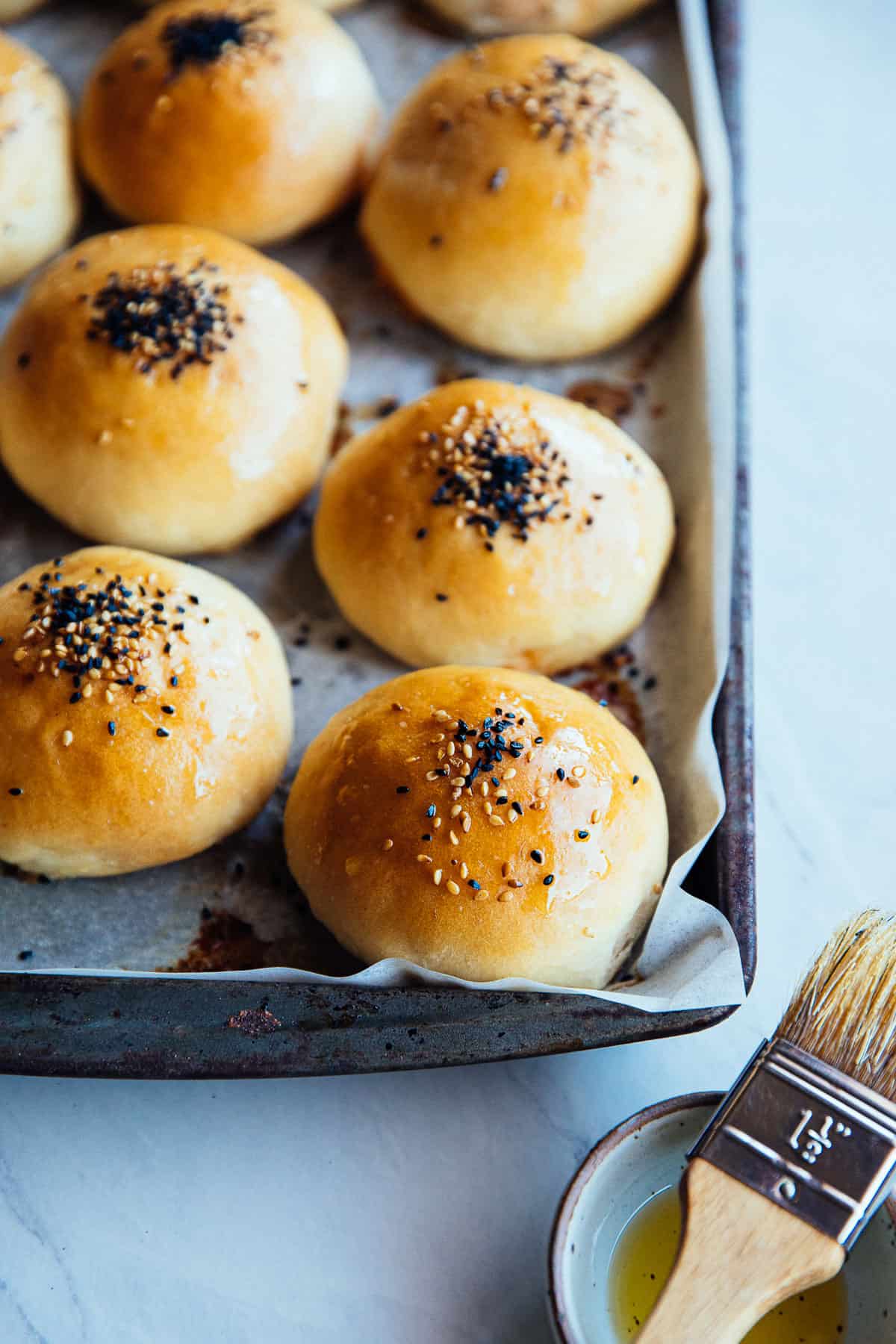
In terms of seeds, sesame and nigella (black cumin) are indispensable in any pogaca. If you don't have nigella seeds, substitute with black sesame... but I'd highly recommend getting your hands on some! They taste very different and are super healthy for you.
Right after they come out of the oven, I love re-glazing them with additional olive oil! You could also use melted vegan butter in case you don't like the aroma of olive oil.
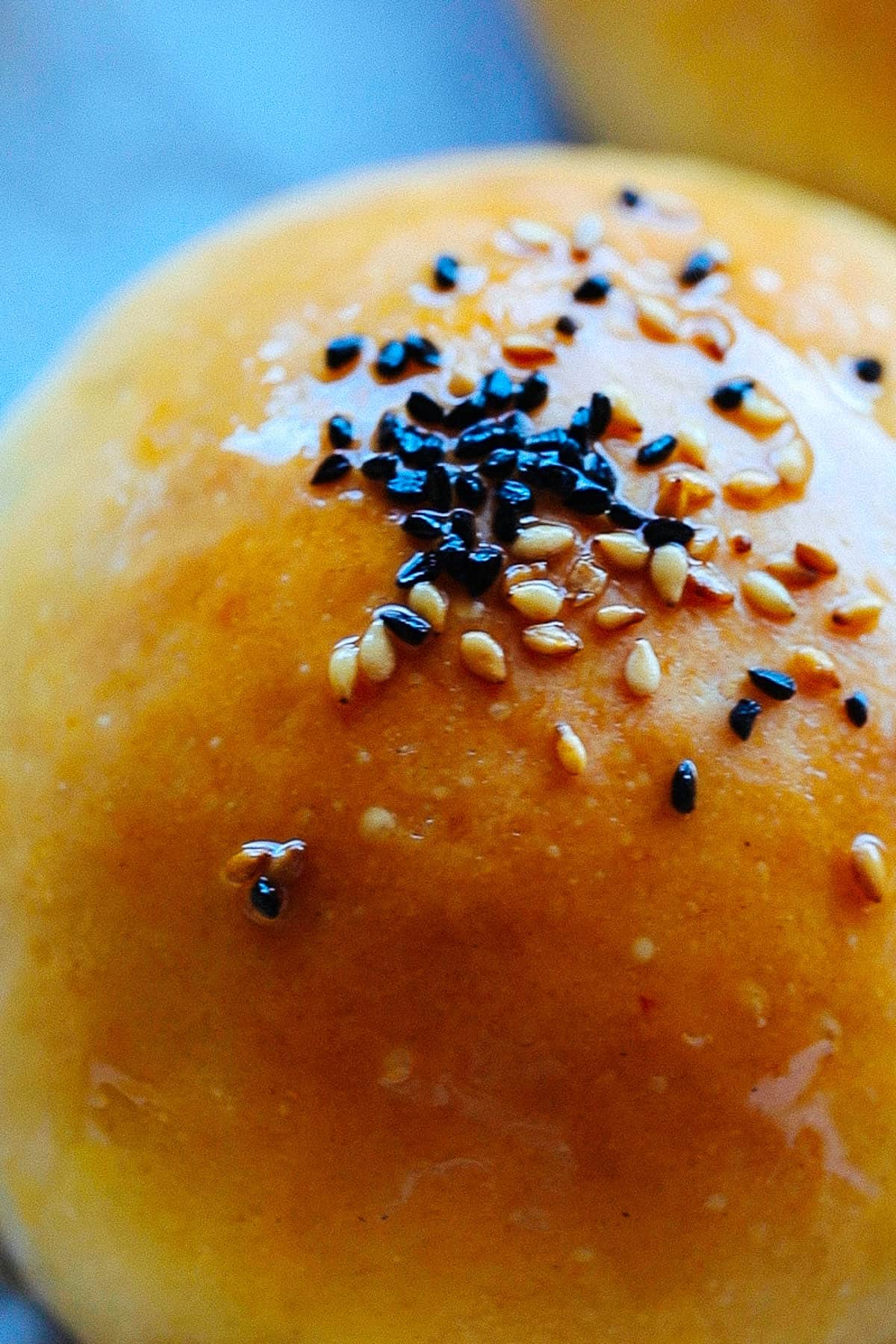
📝 How to make poğaça
Making the Dough
Mix active dry yeast, sugar, and lukewarm water in a large bowl. Whisk and set aside until foamy—takes about 10 minutes. You may also use instant yeast, but should still go through the feeding process to ensure your yeast is alive and kicking! Once the yeast is activated, add in the aquafaba, neutral oil, soy milk, and mix.
In a separate large bowl, mix the flour with salt. Gradually add this flour mixture into the other bowl while mixing with a wooden spoon. Once most of the flour is incorporated, switch to kneading with your hands for about 8-10 minutes, or for 3-4 minutes if using a stand mixer until the texture is like the one below.
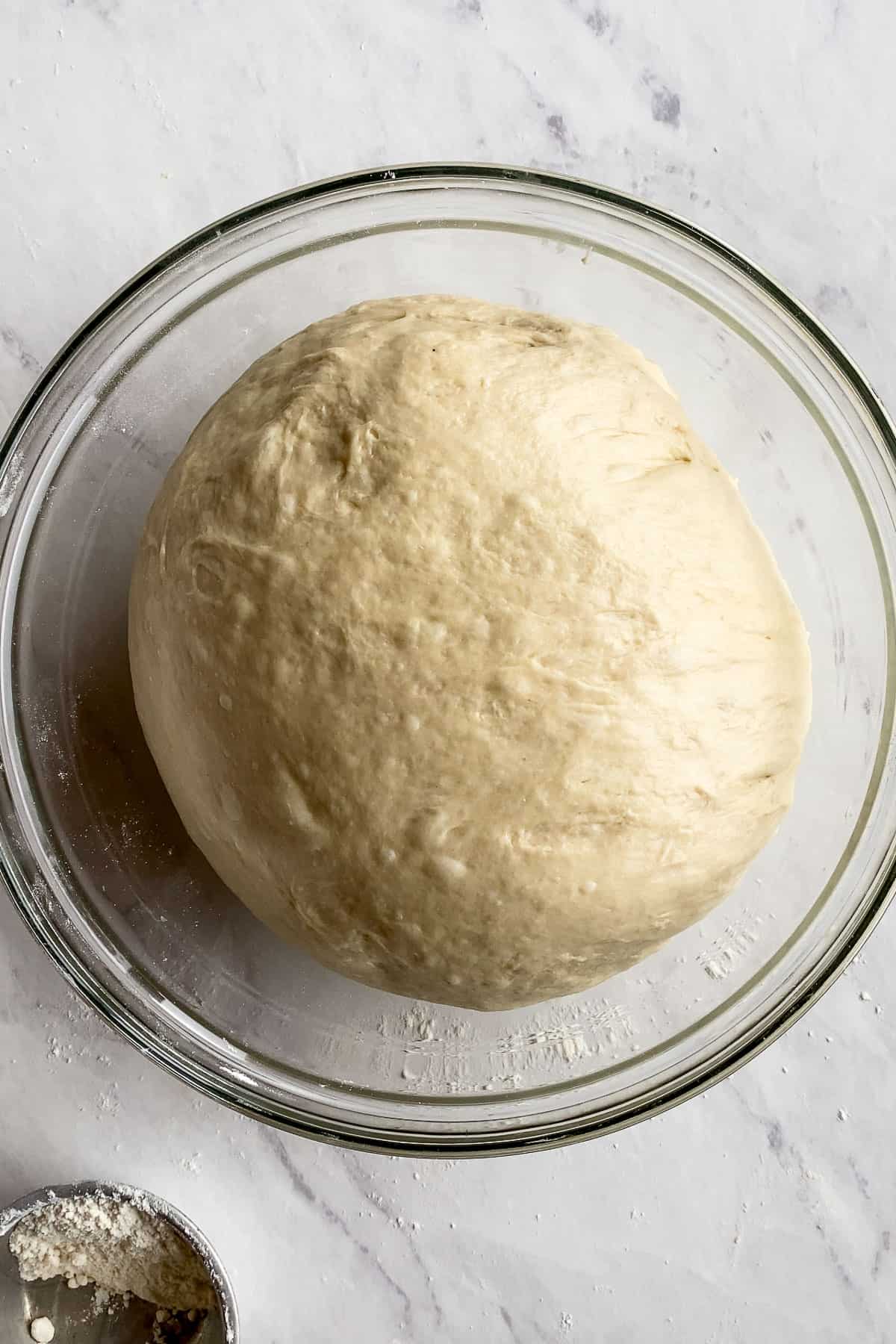
This dough is quite wet so giving it time and letting it autolyse a bit. It will help even though there is salt in the mixture.
Place the kneaded ball of dough back into the bowl, cover with cling wrap, and let rest for at least two hours, until the dough doubles in size. You may also place it in the refrigerator overnight after the first rise.
Potato Filling
Always boil potatoes in cold water:
Starchy vegetables, especially potatoes cooked whole [...] Their vulnerability is a tendency for the outer portions to soften excessively and fall apart while the interiors cook through. Hard and slightly acid water can help them maintain their surface firmness, as will starting them in cold water and raising the temperature only gradually to reinforce their cell walls.
Passage from On Food and Cooking by Harold McGee, Page 285
Peel and mash them with olive oil in a large bowl. Place the diced onions in a pan with olive oil over medium heat. Sprinkle a pinch of salt and the Aleppo pepper, and caramelize the onions—about 12-15 minutes. Add the tomato paste and the minced garlic and cook for another few minutes, until the raw taste from the tomato paste is gone.
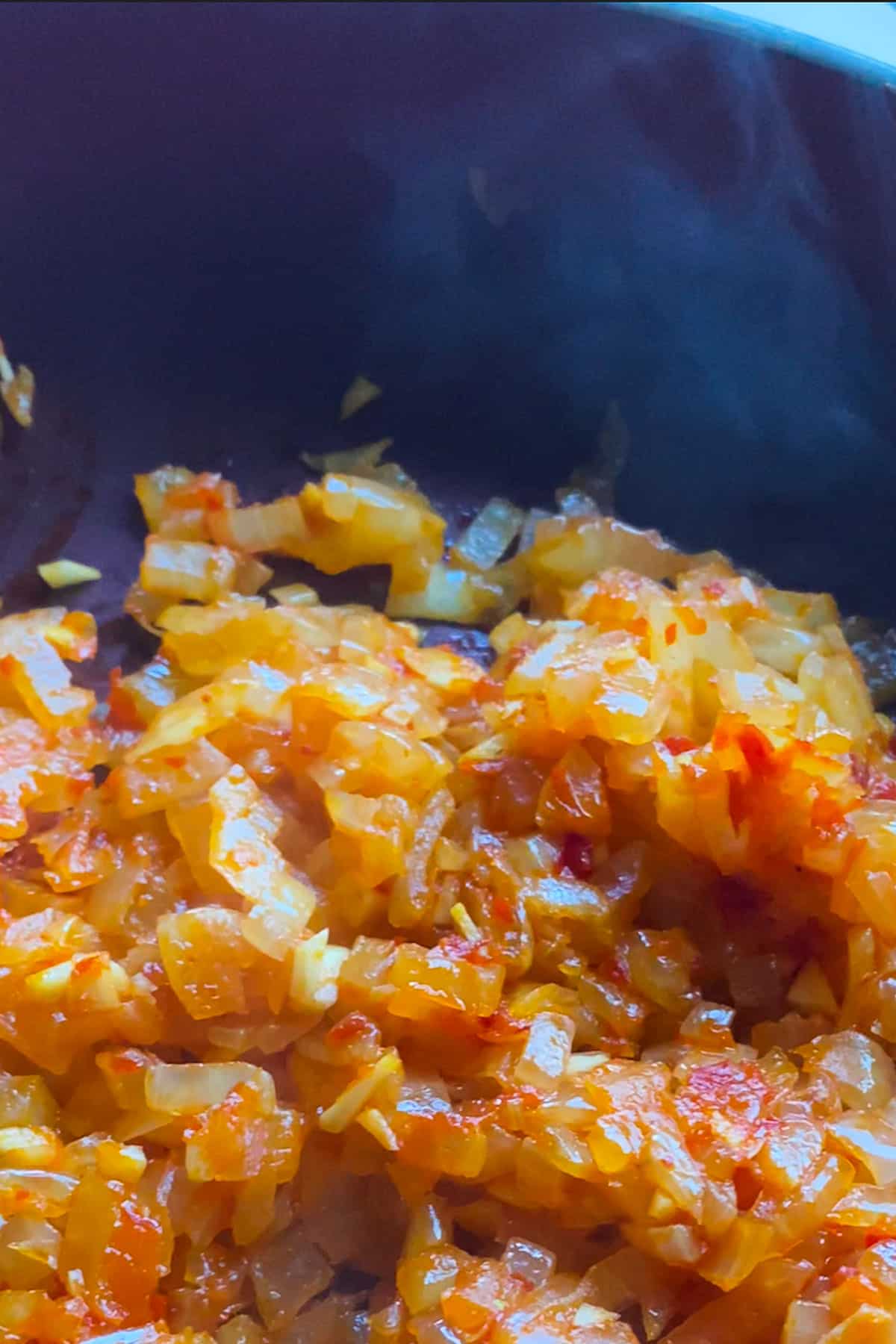
Add the spicy onion mixture into the bowl with the mashed potato and add more salt. Thoroughly mix and let cool.
Assembly
After the first rise, deflate the dough fully by pressing out the large air bubbles and divide into thirty 45g pieces. Lightly flour the working surface and press down each 45g piece of dough into a circle shape with your hands. Place 1 tablespoon of the potato filling, then fold all sides over and lightly press the edges into each other to seal.
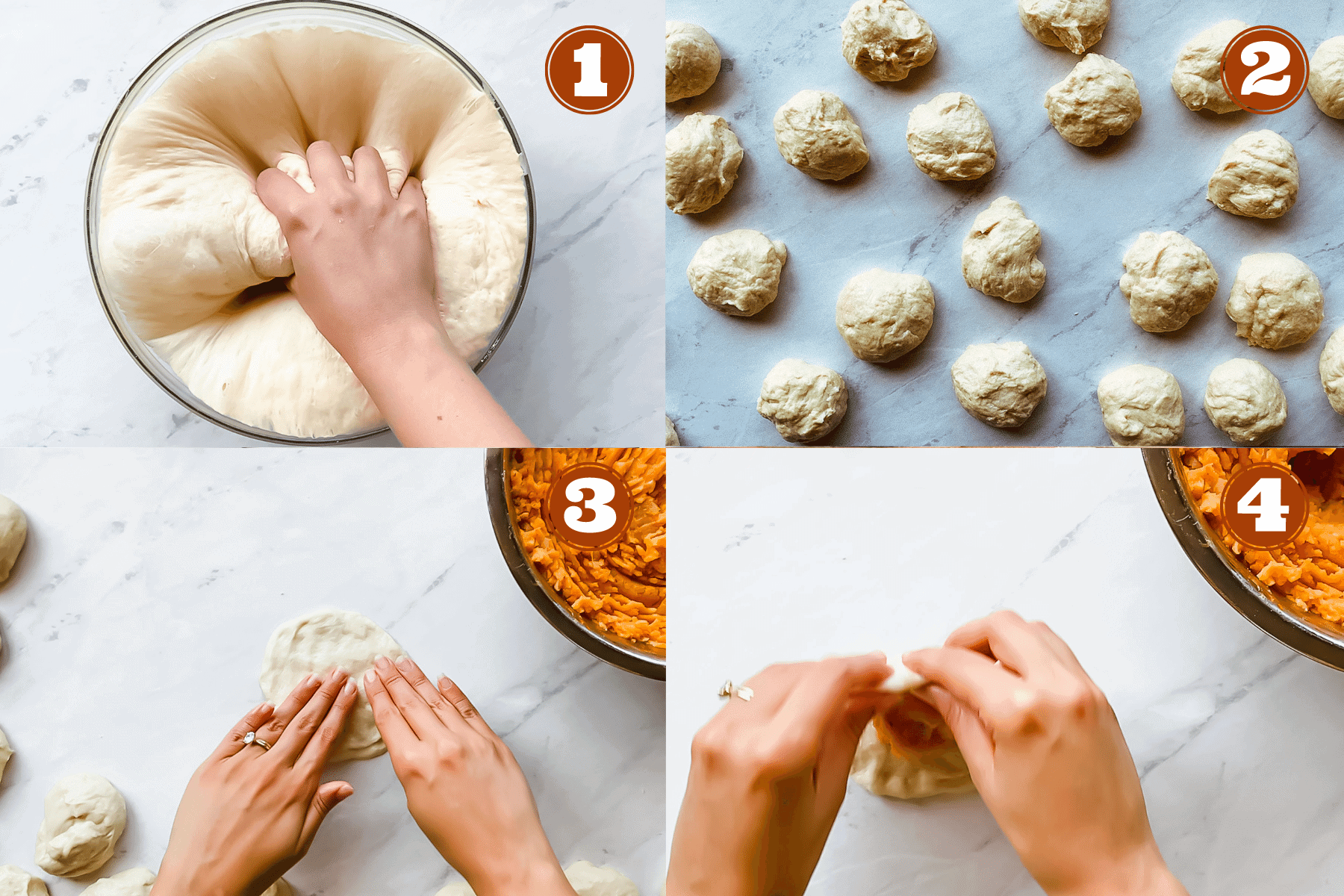
Roll each piece into a ball between your hands, place on a lightly floured surface, cover with a damp dish cloth, and set aside for the final proof. It should take about an hour for the balls to approximately double in size (about 2 ½-inch diameter). If the dough was refrigerated, give the second proof at least three hours.
You can make the pogacas in different shapes like oval, crescent, braided, or half moon if you prefer! Make sure to divide up the pieces accordingly. For example, use at least 100g of dough for a braided pogaca.
Baking
Following the second rise, brush the tops with a mixture of aquafaba and olive oil. Sprinkle sesame and nigella (black cumin) seeds on top. Bake at 360°F for 22-30 minutes until the crust is golden, turning the tray halfway to ensure even baking.
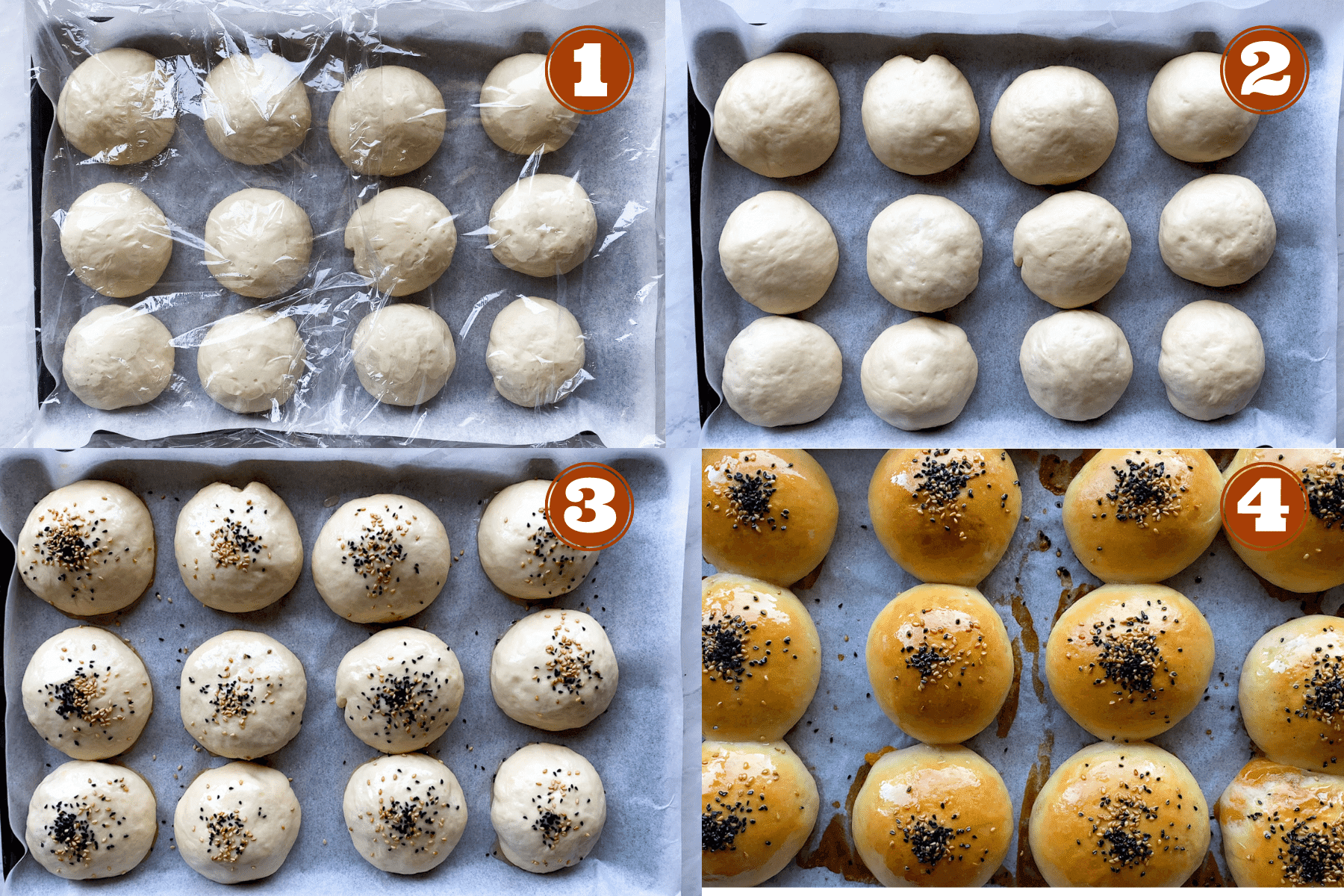
While still hot, brush the pogacas with olive oil. Serve hot for breakfast or as a snack, ideally with Turkish (black) tea.

⏳ Saving pogaca
You may save pogaca for up to 5 days in an airtight container in the refrigerator, or up to three months in the freezer. You may enjoy it at room-temperature as well, but baking them again gives the best results.
They can also be microwaved for 10-20 seconds—since there isn't any "crunchy" texture in pogaca, microwaving works very well.
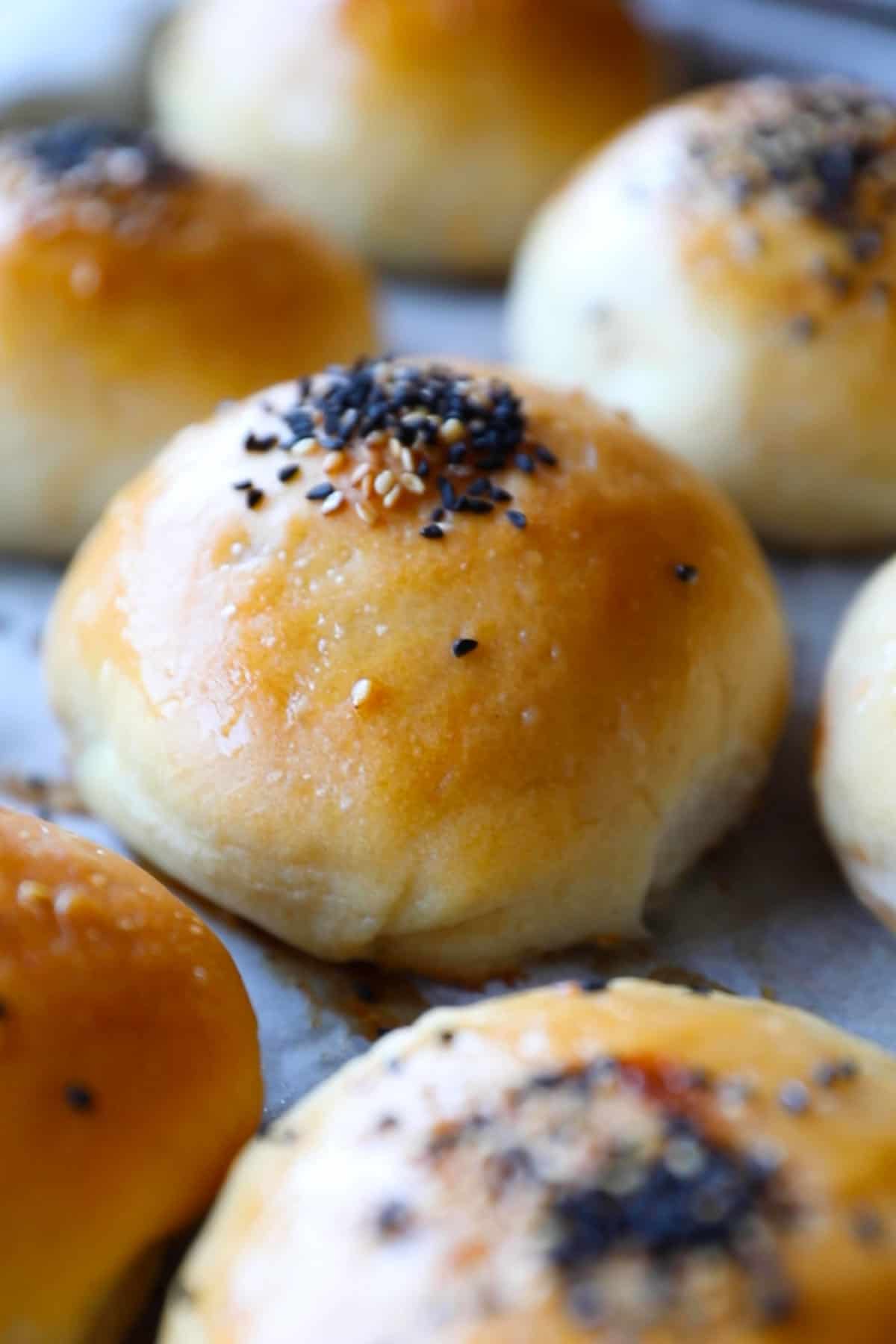
❓ FAQs
Pogaca is pronounced "poe-ah-CHA".
Pogaca pastries are found in the Balkans and Turkey. Pogaca's exact origins are unknown.
Most store-bought or homemade pogaca is not vegan due to the milk and/or butter used in the recipe as well as the egg wash. But it can easily be made vegan (or gluten-free!) with substitutions.
Turkish pogaca tastes somewhere between fluffy dinner rolls and butter biscuits. It can be served plain, but will usually come with popular fillings such as potato, feta, spinach, or ground beef.
Different cuisines often make their own pogacas differently—they can be fluffier or more biscuit-like depending on locality.
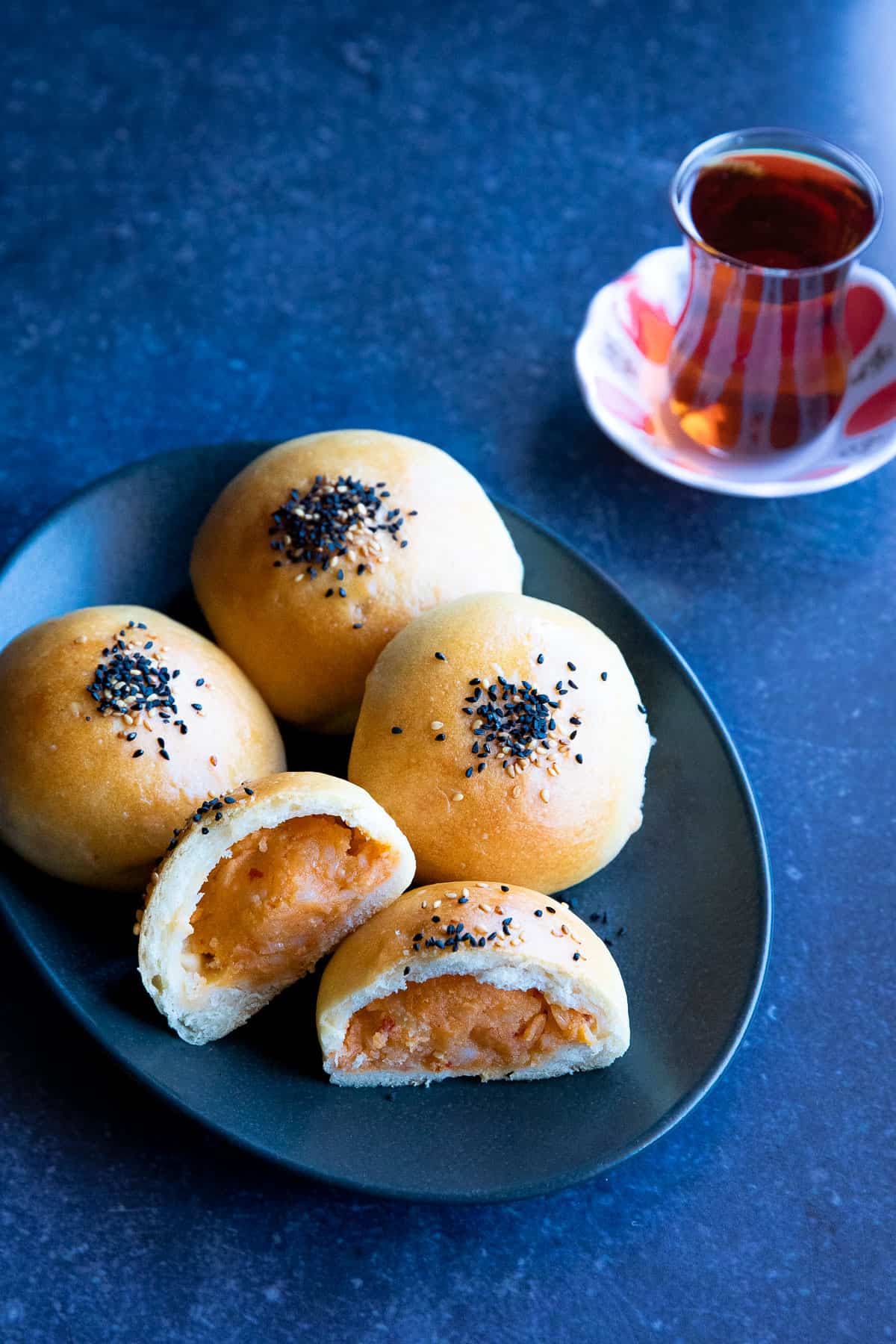
🇹🇷 More Turkish recipes
Try these other delicious Turkish recipes... they never disappoint!
Did you enjoy this poğaça recipe? I'd love to hear from you! Please comment and leave a "⭐️⭐️⭐️⭐️⭐️" rating below. This helps me sustain Aegean Delight and I greatly appreciate it! 🙏
Print📖 Recipe

Vegan Potato Rolls - Turkish Pogaca
- Total Time: 1 hour and 30 minutes + minimum 3 hours' rising
- Yield: 10 servings of 3 pogacas(30 total) 1x
- Diet: Vegan
Description
These fluffy vegan potato rolls are perfect for breakfast or as a savory snack! Made with a spicy potato filling, you won't be able to stop after one. Known as Turkish poğaça, this traditional pastry is all vegan and can be made gluten-free!
Ingredients
DOUGH (FOR THIRTY 45G POGACA DOUGH PIECES)
- 1 teaspoon (6.5g) sugar
- 2 packets (15g) of active dry yeast
- 1 cup (250ml) water, lukewarm (~105°F)
- 6 tablespoons (60g) aquafaba
- ⅔ cup (150ml) neutral oil
- ½ cup + 5 tablespoons (200ml) soy milk (See Notes)
- 5 ⅔ cups (700g) all-purpose flour (See Notes)
- 2 ½ teaspoons (15g) table salt, double volume/same weight if using kosher
- ½ cup extra flour for shaping the dough
POTATO FILLING
- 3 medium (1kg) Russet potatoes
- 2 tablespoons (30ml) olive oil
- 1 large (425g) onion, diced
- 1 tablespoon Aleppo pepper flakes
- 6 cloves of garlic, minced
- 1 tablespoon tomato paste (or Turkish pepper paste if you have it)
- ½ teaspoon table salt
TOPPINGS
- 2 tablespoons aquafaba
- 2 tablespoons olive oil
- 1 tablespoon sesame seeds
- 1 tablespoon nigella (black cumin) seeds
FOR SERVING
- 1 tablespoon olive oil (or vegan butter)
Instructions
MAKING THE DOUGH
1. Mix active dry yeast, sugar, and lukewarm water in a large bowl. Whisk and set aside until foamy—takes about 10 minutes. Once the yeast is activated, add in the aquafaba, neutral oil, soy milk, and mix.
2. In a separate large bowl, mix the flour with salt. Gradually add this flour mixture into the other bowl while mixing with a wooden spoon. Once most of the flour is incorporated, switch to kneading with your hands for about 8-10 minutes, or for 3-4 minutes if using a stand mixer, until the texture is smooth (see photo in the post for reference).
3. Place the kneaded ball of dough back into the bowl, cover with cling wrap, and let rest for at least two hours, until the dough doubles in size. You may also place it in the refrigerator overnight after the first rise.
POTATO FILLING
1. Boil the potatoes (always start boiling starchy root vegetables in cold water). Peel and mash them with the olive oil in a large bowl.
2. Place the diced onions in a pan with olive oil over medium heat. Add a pinch of salt and the Aleppo pepper, and caramelize the onions—about 12-15 minutes. Add the tomato paste and the minced garlic and cook for another few minutes, until the raw taste from the tomato paste is gone.
3. Add the spicy onion mixture into the bowl with the mashed potato and add more salt. Thoroughly mix and let cool.
ASSEMBLY & BAKING
1. After the first rise, deflate the dough fully by pressing out the large air bubbles and divide into thirty 45g pieces.
2. Lightly flour the working surface and press down each 45g piece of dough into a circle shape with your hands. Place 1 tablespoon of the potato filling, then fold all sides over and lightly press the edges into each other to seal.
3. Roll each piece into a ball between your hands, place on a lightly floured surface, cover with a damp dish cloth, and set aside for the final proof. It should take about an hour for the balls to approximately double in size (about 2 ½-inch diameter). If the dough was refrigerated, give the second proof at least three hours.
4. Preheat oven to 360°F.
5. Following the second rise, brush the tops with a mixture of aquafaba and olive oil. Sprinkle sesame and nigella (black cumin) seeds on top.
6. Bake for 22-30 minutes until the crust is golden, turning the tray halfway to ensure even baking.
7. While still hot, brush the pogacas with olive oil. Serve hot for breakfast or as a snack, ideally with Turkish (black) tea.
8. You may save pogaca for up to 5 days in an airtight container in the refrigerator, or up to three months in the freezer. You may enjoy it at room-temperature as well, but baking them again gives the best results. You could also microwave them for 10-20 seconds.
Notes
Milk: Make sure to use unsweetened and unflavored plant milks for the recipe. I love soy, especially the Westsoy or Trader Joe’s brands made using only soybeans and water.
Flour: Can be made with gluten-free flour. If necessary, I highly recommend using King Arthur or Bob’s Red Mill measure-for-measure GF flours. The small-sized pogacas are perfect if you make them GF as the dough will be more prone to tears while kneading due to a lack of robust structure traditionally provided by gluten.
Filling: You don’t need to use potato filling. Feta cheese with parsley, chopped black olives or olive paste, and “ground beef” fillings are all very popular in Turkey. In fact, you don’t need any filling at all! You may just bake the dough as is and enjoy fluffy vegan dinner rolls.
Shape: You can make the pogacas in different shapes like oval, crescent, braided, or half moon if you prefer! Make sure to divide up the pieces accordingly. For example, use at least 100g of dough for a braided pogaca.
Aleppo (aka pul biber) is a bright, fruity type of chili flakes commonly consumed in the Eastern Mediterranean. If you ever decide to build a Turkish pantry, make sure to start with Aleppo or Urfa pepper flakes—ideally both. Feel free to substitute with regular chili flakes if not available.
- Prep Time: 1 hour
- Cook Time: 30 minutes
- Category: Turkish, Snack, Breakfast
- Method: Bake
- Cuisine: Turkish, Balkan


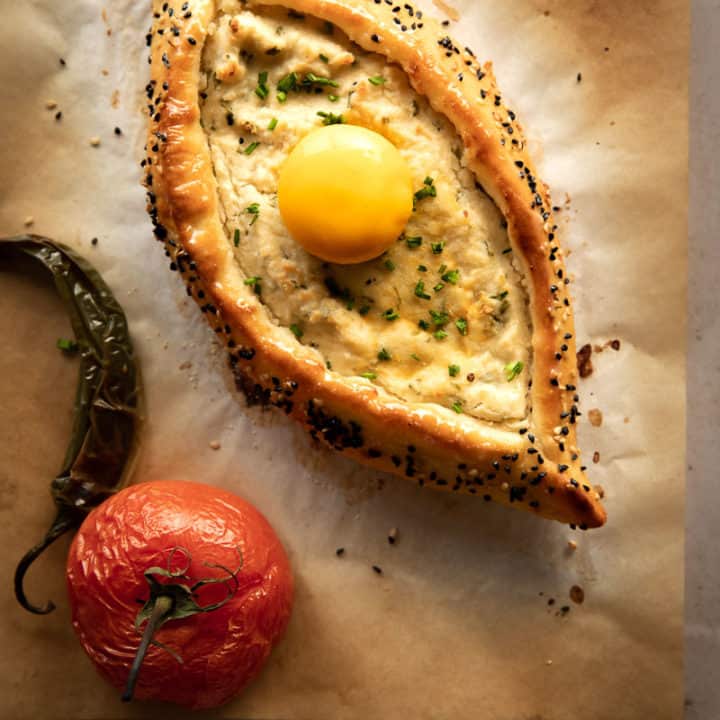



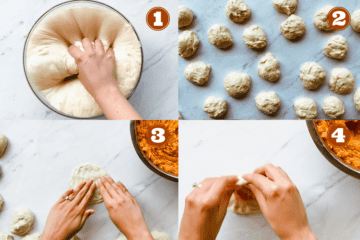


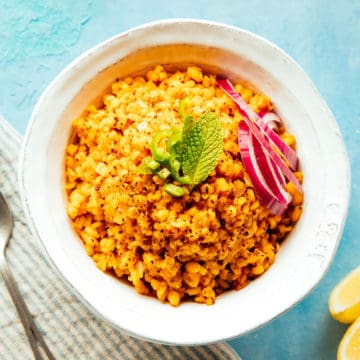
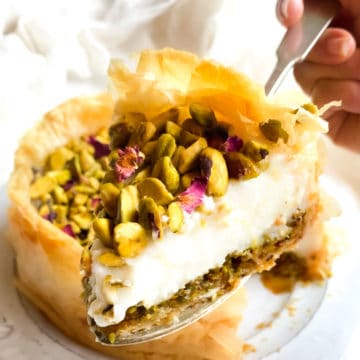
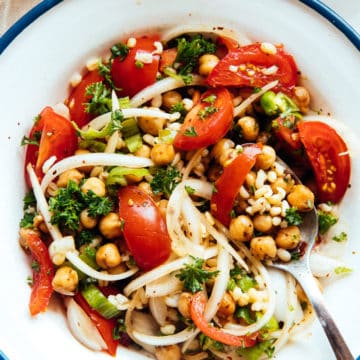
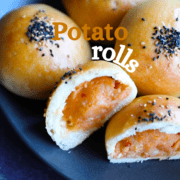
Klara
Dear Gönül,
Thank you very much for the recipe. I am Hungarian and have eaten lots of pogacsas in my life. one The filling is new to me. I will definitely try the vegan version with caramelized onions!
Gönül
Hi Klara, thanks so much for commenting! I'd love to try the Hungarian pogaca at some point too, I wonder if they're identical...
Do let me know once you try the potato-onion filling, it's my favorite for sure 🙂
AJ
Made them without filling like dinner rolls. Delicious
Gönül
Thanks for trying out the recipe, AJ!